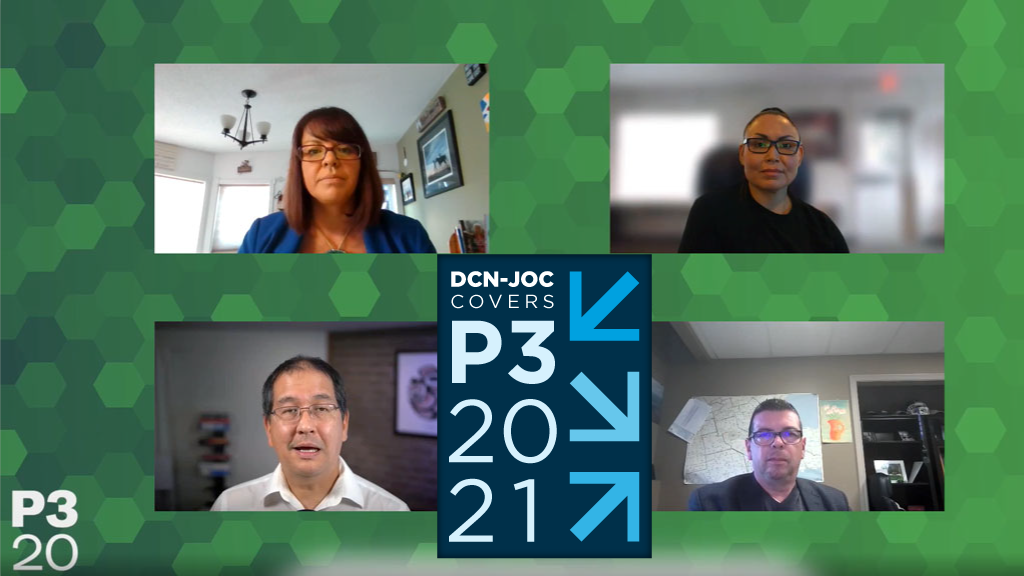A group of Indigenous leaders recently shed light on the role Indigenous groups can play in advancing Canada’s march towards net-zero, what missteps project partners can avoid when working with a First Nation and what resources are available to First Nations groups interested in economic development.
The panel was put together as part of this year’s Canadian Council for Public-Private Partnerships annual P3 conference.
One of the panellists, Chief Sharleen Gale of the Fort Nelson First Nation in B.C., is currently working to develop the Tu-Deh-Kah Geothermal Project. The 7-15 MW geothermal facility would transform a depleted Clarke Lake gas field into a renewable geothermal energy project. The 100 per cent Indigenous-owned project would be the first of its kind in the country and would help get Fort Nelson’s electricity grid off fossil fuels.
Gale explained the First Nation first began discussing the project after a conference presentation by Geoscience BC. After applying for grants and work with provincial and federal partners, several test wells have already been dug.
“This just shows you what can be done when you work with First Nations people,” said Gale. “We would not be as successful if it wasn’t for everyone coming together. We continue to foster those relationships and update them. We need to set an example that we can transition to energy that reduces greenhouse gas.”
Her advice to groups looking at developing projects on First Nations territory was to engage with the leaders and the community with sincerity.
“Nothing is more frustrating than to read a report that we met in the freezer aisle of IGA,” said Gale. “That is not consultation and it’s not meaningful. Come on day one and discuss the project with us. We are stewards of the land. We know where things can and can’t go.”
She said taking this one step saves lots of time, money and effort in the long run. She emphasized the main goal for a First Nation is to enhance members’ economic wellbeing and aligning a project with that goal will make the project much smoother.
She strongly encouraged other First Nations groups interested in economic development projects to connect with the First Nations Major Projects Coalition which can help add capacity and expertise to their efforts.
“The coalition has tools and supports that First Nations can bring back to their membership,” she said. “If you are a struggling First Nation and see a great opportunity or project you want to be involved in, reach out to the coalition.”
Matt Jamieson, president of Six Nations of the Grand River Development Corporation in Ontario, has experience in a whole portfolio of projects that produce a combined 1,000 megawatts of green power.
Six Nations is currently developing the Oneida Energy Storage project in a joint venture with NRStor Incorporated. The project would draw and store existing surplus baseload and renewable energy during off peak periods. Power would be released to the Ontario grid when energy demand is at its peak. In addition, the energy storage facility would help stabilize Ontario’s electricity sector by providing grid balancing services.
“We are excited by the prospect and its an example of what can be accomplished when the Indigenous community gets organized,” said Jamieson. “We have been in lock-step with NRStor. They know our values.”
He explained finding the right partner for the project was critical and NRStor has been key in helping get buy-in from the government on the emerging battery storage technology.
“We are fortunate to have a partner with the horsepower and experience in batteries,” said Jamieson.
He advised other First Nations to not just chase opportunities, but to first focus on establishing what you want as a community and building a strategy around that. Before the Six Nations project was launched the team spent three years visiting members around kitchen tables to get a sense of what the goals should be.
“Long gone are the days when we will just partner with anyone,” he said. “There must be a foundational strategy to what you want to achieve as a community. Build your strategy and structure to achieve that goal. If you do that you will find the right partners and projects.”
Chief Crystal Smith of the Haisla Nation is currently working on developing Cedar LNG, the first Indigenous-majority-owned LNG export facility in Canada. Smith explained it has been decades in the making. The Nation has long seen industrial development in its territory and worked towards having a share and a say in it.
One of the first pieces of advice she gives to those looking at working with a First Nation is to hire First Nations people.
“They can be in an advisory role and help you navigate how those communities run and give insight,” she said.
She also stressed that projects need to get buy-in from First Nation members, not just the leaders. This means working at educating members about what the project is and getting a mandate from them.
“Introducing and getting those education pieces in is key,” she said. “There are knowledge holders in our community and experts. We need to hear from them, address their concerns and make sure we are meeting their needs.”
Follow the author on Twitter @RussellReports.











Recent Comments